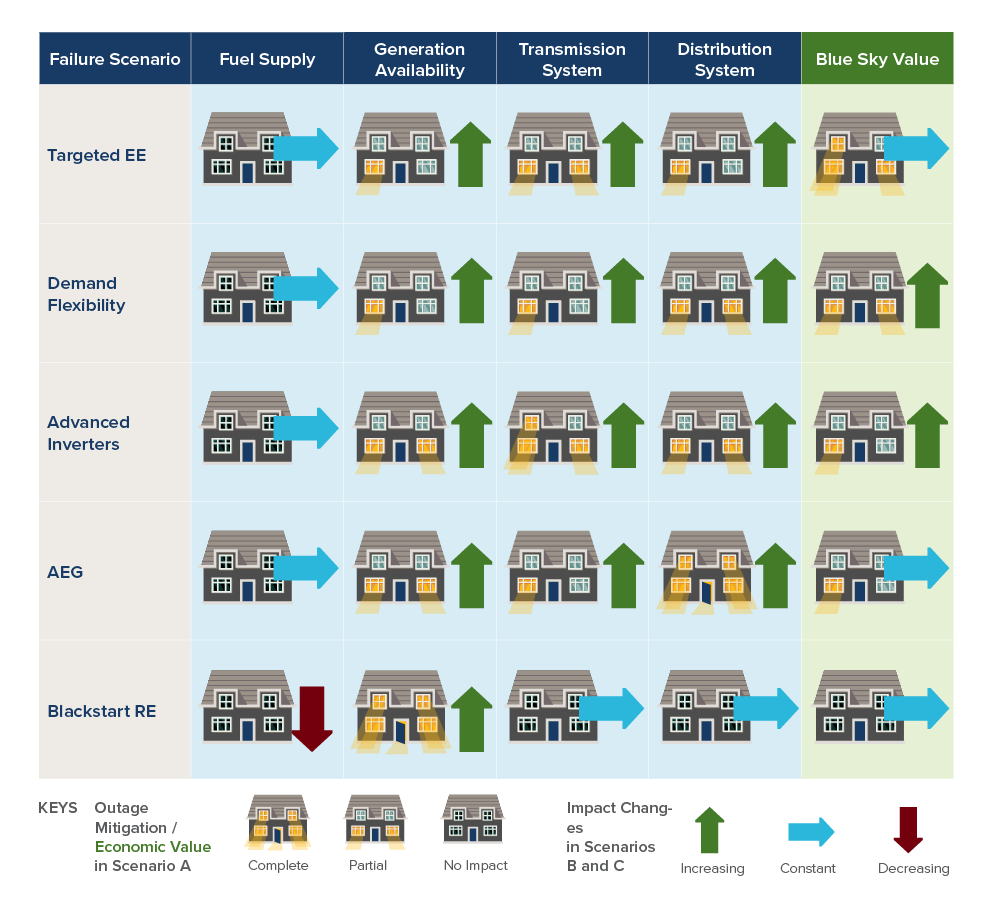
Report | 2020
Reimagining Grid Resilience
A Framework For Addressing Catastrophic Threats to the US Electricity Grid in an Era of Transformational Change
Since its origins at the beginning of the last century, the electricity system has been a critical driver of US economic growth. Reliable and resilient delivery of electricity to homes and businesses is a foundation of national prosperity, and grid outages have grave consequences.
The current grid is characterized by a one-way flow of services and value that convert primary energy to value-added services. This system, with its linear dependencies and easily disrupted individual components, is inherently fragile. Disruptions within any component of the grid can cause outages for customers.
A disruption in any component of the grid can cause outages for customers
Utilities have long recognized this inherent vulnerability and managed it through redundancy and hardening of critical equipment. But most present-day approaches to grid resilience were first designed for a previous era, where large-scale, fuel-reliant generators were the most economical method for providing electricity. But that is changing rapidly, as newer technologies including solar, wind, and energy storage continue to fall in price and rapidly gain market share across the United States. Common approaches to resilience fail to take advantage of these market-driven technology trends.
Common approaches to grid resilience only address individual components

Customer-located backup power resources are valuable in all outage scenarios, but are generally fuel-limited and cannot maintain service during an extended outage
Click each button below to see its disruption.
In contrast to legacy grid resilience approaches, an emerging set of solutions are generally located closer to the customer, harness the ongoing trends in grid technologies, provide targeted benefits for critical loads, and provide economic value during normal system operations.

These and other modern approaches to grid resilience exemplify a set of principles that can serve as guideposts for investors, regulators, policymakers, and other stakeholders as they mobilize capital to reimagine the power grid of the 21st century.
This report describes the changing nature of resilience within the US grid and details specific recommendations to take advantage of current technological trends. This will help bring about investment in a grid that promotes resilience by design, economically and from the bottom up, and not as a cost-adding afterthought years later.
For additional context, see the companion blog Reimagining Grid Resilience in the Energy Transition.
Donate
DOUBLE your impact on our shift to clean energy!
A generous donor is doubling all gifts, up to a total of $100,000, through June 30, 2024. Your gift helps RMI increase access to safer, healthier, and cleaner energy in more communities.
The shift to clean energy starts locally. It starts with you.
Donate